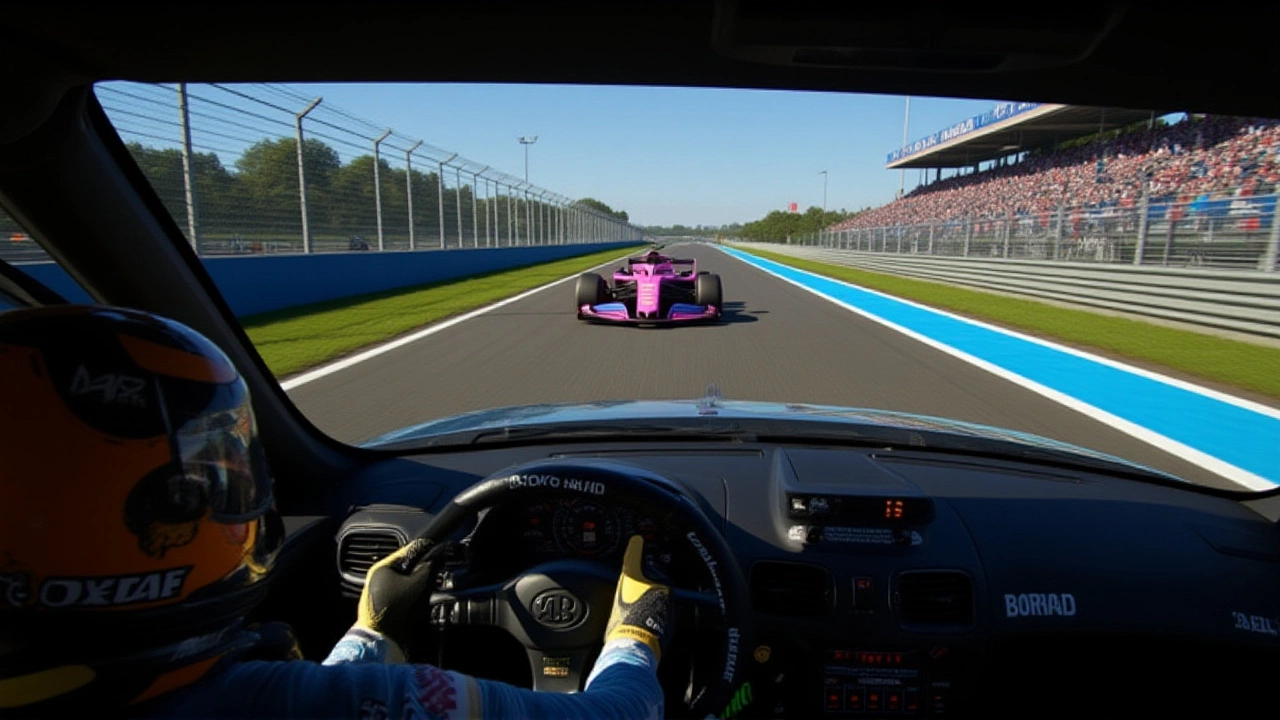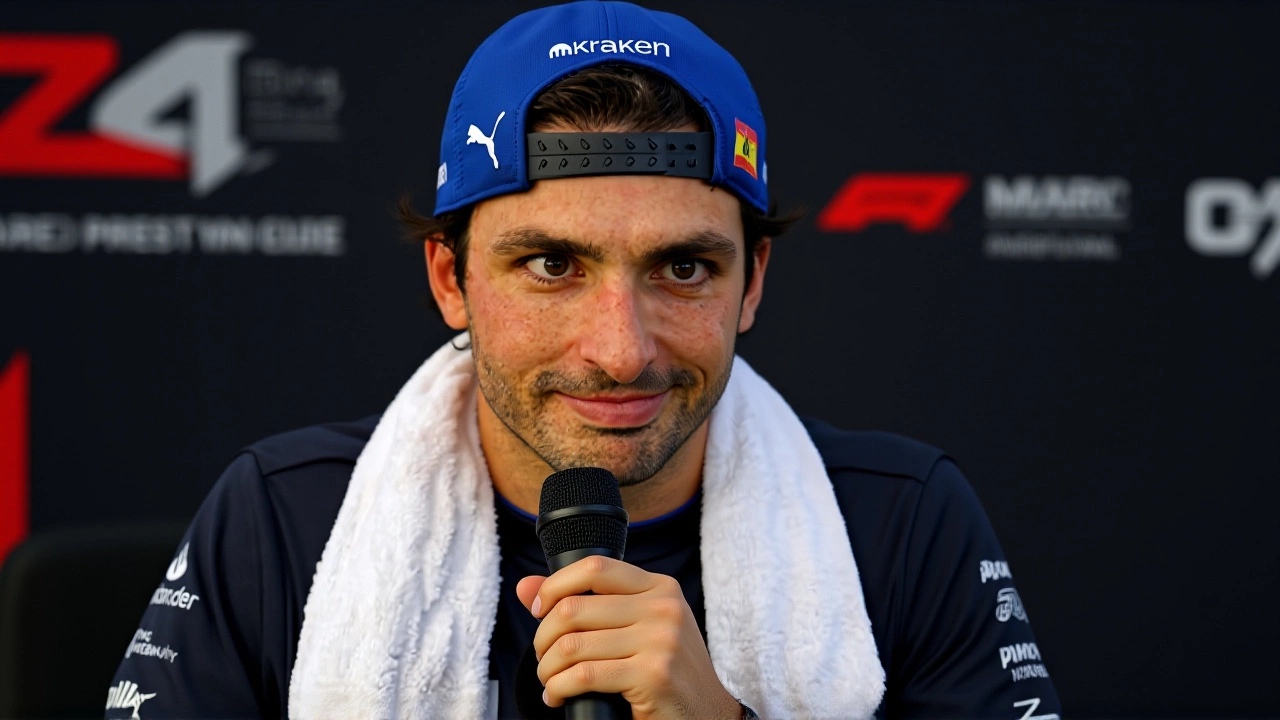When Carlos Sainz Jr., Formula 1 driver for Williams Racing, qualified ninth at the 2025 United States Grand PrixCircuit of the Americas on Saturday, October 18, 2025, the Spanish veteran declared his laps "mistake‑free and very solid." The result, achieved under shifting wind conditions, gave the team a realistic glimpse of its qualifying ceiling on a track notorious for crosswinds.
Background: Sainz’s Move to Williams
Born in Madrid on September 1, 1994, Sainz spent six seasons with Scuderia Ferrari before cutting ties at the end of 2024. The 30‑year‑old signed a two‑year deal with Williams Racing ahead of the 2025 season, joining an outfit that has been chasing a resurgence since Sir Frank Williams founded it in 1977. Team principal James Vowles – a former Mercedes strategist – promised a fresh technical direction, pitching the FW47 as a chassis that would shine over race distance even if single‑lap speed lagged.
Qualifying Session Overview
The qualifying session kicked off at roughly 16:30 CDT (UTC‑5). After a brief dry spell, gusts from the south‑west began whipping across the 5.513‑km layout. Sainz barreled through Q1 and Q2 without incident, but the last segment proved treacherous. "The wind kept changing direction on the back straight, so you never knew if the car would lift or stay planted," he explained in the post‑qualifying press conference.
Despite the turbulence, the Spaniard posted three clean laps in Q3, each within a few hundredths of a second of his best. The final time landed him ninth on the grid, ahead of teammate Alexander Albon, who qualified twelfth. Albon – the Thai‑British driver who joined Williams earlier in the season – admitted his car felt "a bit unsettled" in the same gusts.
Across the pit lane, Mercedes star George Russell secured fourth place, later lamenting that a better tyre‑temperature window could have pushed him into the top three. The contrasting fortunes highlighted the fine line between a perfect lap and a missed opportunity at COTA.
Sprint Shootout and Race Pace
Earlier on Friday, Sainz had already impressed during the Sprint Shootout, punching his way into the top ten under more stable conditions. The following morning, the Sprint Race unfolded at 12:00 CDT, where he clinched a podium finish – third place – echoing his performance in Baku a week earlier. "The Sprint results don’t tell the whole story," Sainz said, noting that the race pace of the FW47 improves as the tyres heat up and the aerodynamic package settles.
Technical staff from Williams Racing confirmed that the chassis is deliberately designed for durability over longer stints. "Our simulations show a 0.4‑second gain per lap after the first 15 laps, especially when the wind calms," said senior aerodynamics engineer Laura Miller. That endurance edge has already paid dividends at tracks like Monaco and Budapest, where the team consistently finished ahead of rivals despite lower grid positions.
Team Reactions and Technical Insights
Vowles, speaking to the team’s media crew, praised the drivers’ composure. "Both Carlos and Alex showed maturity under pressure. The FW47 is a work‑in‑progress, but it’s delivering where it matters – over a race distance," he noted. The engineers also admitted that the car’s front wing struggled to maintain stability when crosswinds hit the Turn 1 DRS zone, a known weak spot at COTA.
Comparisons with direct competitors were inevitable. Alpine F1 Team and Haas F1 Team posted lap times roughly 0.3 seconds quicker in qualifying trim, underscoring the narrow margin that separates midfield teams. Stake F1 Team Kick Sauber, meanwhile, appeared to ride the same wind gusts with a slightly higher drag configuration, ending up outside the top ten.
In the aftermath, Sainz summed up his feelings: "I’m confident we can convert this grid spot into a solid points haul on Sunday. The car feels stronger the longer we run, and the wind should settle by race time." He also hinted at a strategic gamble, suggesting the team might opt for a slightly richer fuel load to capitalize on the FW47’s late‑race stability.

Impact on the Championship
Williams Racing sits eighth in the Constructors' Championship with 32 points after the COTA qualifying. The ninth‑place start, coupled with a potential podium finish, could tighten the battle for seventh against the rising Haas outfit, which sits just two points behind.
For Sainz, the result keeps his personal championship hopes alive, albeit modestly. He currently holds 14 points, five clear of Albon but trailing the top‑three drivers by a comfortable margin. Still, every point matters as the season approaches its final stretch – only two races remain after the United States round.
Russell’s fourth place reinforces Mercedes' lead in the Drivers' standings, but his comment about not maximising potential hints at a possible intra‑team showdown with teammate Lewis Hamilton later in the year.
Looking Ahead to the Grand Prix
The main race is slated for Sunday, October 19, 2025, at 16:00 CDT (21:00 UTC). With 56 laps to run, tyre management and wind direction will be decisive. Williams plans to start on the soft compound, hoping the car’s race‑long grip will let Sainz attack the top six before the final pit window.
Fans can also expect a dramatic midfield battle, as the Alpine and Haas squads vie for the same points bracket. The event will be broadcast live across the globe, with the United States audience projected to top 3 million viewers – a record for the circuit’s viewership.
- Carlos Sainz Jr. qualified ninth at COTA.
- Williams Racing remains eighth in the Constructors' standings.
- The FW47 shows stronger race‑pace than qualifying‑pace.
- Variable wind conditions were the key challenge during qualifying.
- Sunday’s race starts at 16:00 CDT, 56 laps.
Frequently Asked Questions
How does Sainz’s ninth‑place qualifying affect Williams' championship hopes?
The ninth‑place start gives Williams a realistic chance to score points, especially after Sainz’s Sprint podium. If the team converts the grid slot into a top‑six finish, they could close the gap to seventh‑placed Haas, who trails by just two points.
Why is the FW47 more competitive over race distance than in a single lap?
Williams engineers designed the chassis with a focus on tyre‑temperature stability and aerodynamic efficiency that improves as fuel burns off. The car’s front wing loses less downforce in steady‑state conditions, allowing it to gain around 0.4 seconds per lap after the first 15 laps.
What role did wind play in the qualifying session?
Crosswinds on the back straight and through Turn 1 disrupted aero balance, causing the FW47 to lift slightly on the straights. Drivers reported a feeling of reduced grip, which forced them to back‑off the throttle earlier than usual, shaving off precious tenths of a second.
How does the COTA layout influence midfield strategies?
COTA’s mix of fast straights, tight hairpins and a long DRS zone rewards cars that can manage tyre wear while maintaining straight‑line speed. Midfield teams often choose a softer tyre for the opening stint to gain early track position before switching to the harder compound for a longer, more stable finish.
What are the expectations for the race weekend’s spectators?
Organisers anticipate a record‑breaking crowd, with more than 120,000 fans expected over the three‑day event. The combination of a tight qualifying battle, a strong Sprint podium for Williams, and the possibility of a surprise winner has generated buzz across social media platforms.
